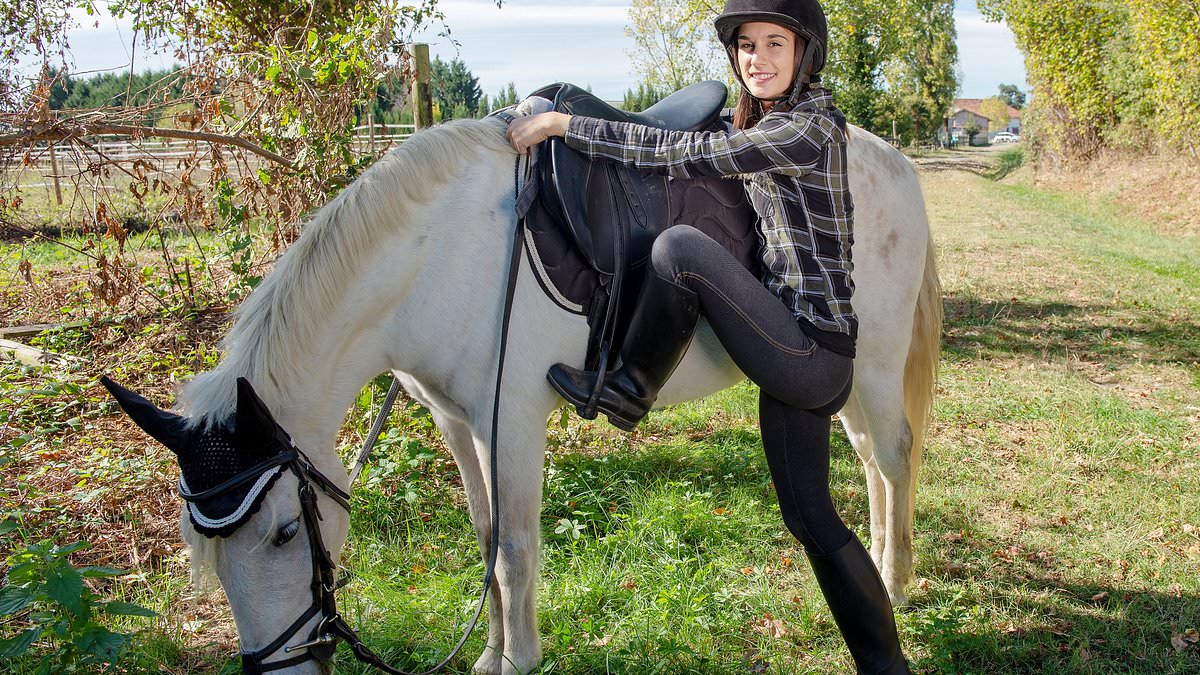QUESTION: How long has it been standard practice (and why) for horse riders to mount and dismount from the left side of the horse?
The tradition of mounting and dismounting from the left side can be traced back to medieval times and relates to the wearing of the sword. The weapon wielded by Roman legionaries was the gladius: this was worn on the right side, which meant that when being drawn it didn’t impact on the holding of the shield, or on the soldier standing next to a man.
However, the gladius was gradually replaced by the spatha from the late 2nd to the 3rd century AD. This longer sword was worn on the left, allowing the soldier to draw it across the body. This was the method favoured by cavalry, and it made sense for ranks of soldiers to draw in the same way.
The practice continued into the Middle Ages as swords became longer and more difficult to manage. Most people were right-handed and men hung their swords on their left side, hilt forward for a quick draw. Mounting from the left reduced the rider’s chance of entangling himself in his weaponry or stabbing his steed.
The tradition was preserved even with the lighter swords of the Renaissance and continued until the cavalryman and his curved sabre were retired.

The tradition of mounting and dismounting from the left side can be traced back to medieval times and relates to the wearing of the sword (stock photo)
There may have been a biological element. Early horse trainers noted that horses demonstrated a preference for being approached and worked from that side. Some tests have shown that the horse’s left eye responds quicker and more strongly to stimuli; and they like to keep humans in that line of sight.
To reinforce this, the left side of the horse became known as the ‘near’ side and the right as the ‘off’ side.
Mounting from the left was not universal practice; Samurai warriors of feudal Japan wore their two swords tucked into the obi or sash, to be handy but out of the way, and are believed to have mounted from the right. Napoleon Bonaparte, who was a left-hander and therefore wore his sword on the right, is said to have mounted from the right.
Susan Greenwood, Berwick-upon-Tweed, Northumberland.
QUESTION Why do the Italians call Munich ‘Monaco’?
Munich is called München in Germany, which means ‘Home of the Monks’ and refers to its origins at the Benedictine monastery at Tegernsee, which was probably founded in AD 750.
The name in its earliest recorded form, ‘forum apud munichen’, was Latinised as Monacum, which gave rise to the modern Italian name for the city, Monaco; and other forms such as Munich.
The principality of Monaco, a sovereign city-state on the French Riviera, has an unrelated etymology. It can be traced back to an ancient Greek colony by the name of Mónoikos, meaning single house, which dates from the 6th century.
Len Brewster, Hereford.
QUESTION Christians believe in Heaven; what are the equivalents in other religions?
Different world religions have diverse beliefs about the afterlife; and concepts such as Heaven and Hell vary widely.

Hinduism doesn’t have a singular heaven or hell but rather the concept of Moksha, which is liberation from the cycle of death and rebirth (stock photo)
In Islam, believers can look forward to reaching Jannah, a paradise of eternal bliss, where they will be rewarded with delights. Conversely, Jahannam is the equivalent of Hell, a place of punishment for those who have done wrong.
Hinduism doesn’t have a singular heaven or hell but rather the concept of Moksha, which is liberation from the cycle of death and rebirth (Samsara). Achieving Moksha is often described as a state of union with the divine.
Like Hinduism, Buddhism seeks liberation from the cycle of reincarnation. Nirvana is the state of ultimate liberation, where one is free from suffering and desire. It is a state of enlightenment and cessation of the cycle of rebirth.
Sikhs aim for Mukti, which is spiritual liberation from the cycle of birth and death. Achieving Mukti involves merging with God and experiencing eternal bliss.
Judaism has varying views on the afterlife but some Jewish traditions mention Olam Ha-Ba, the World to Come, where the righteous are rewarded. The specifics of this concept can vary among different Jewish denominations.
In Shinto, the indigenous religion of Japan, there is a belief in Kami, which are spirits or deities that inhabit natural elements, objects and ancestors. The afterlife in Shinto is often associated with the idea of joining these ancestral spirits. Ancestors are venerated and remembered; and their spirits are thought to dwell in various places, such as household shrines or natural settings.
Ancient Egyptians believed in a complex afterlife journey. The deceased person’s soul had to navigate various challenges and obstacles in the Duat, a realm that included gates, demons and judgment by the god Osiris.
Viking warriors who died in battle went to Valhalla, where they would spend eternity drinking or feasting; those who died on their sickbeds ended up in Hel.
Simon Jamieson, Glasgow.
QUESTION Many great British companies were founded by Quakers. What made them such a force in business?

The entrance to the Cadbury factory in Bournville, Birmingham. The Cadbury family were famously Quakers
Further to the earlier answer, George Fox, founder of the Quakers, came from a small village across the A5 from where I live called Fenny Drayton in Leicestershire. As was said in the previous reply, they respected the talents within their workforce, not just using their ideas but crediting their employees for that input.
However, above and beyond this, they showed care and respect for their workforce by building housing for them, such as the Cadbury family’s Bournville, a true ‘Garden Village’, providing not just a roof over their heads but internal sanitation, spacious living areas and open spaces in which to relax and enjoy nature.
It’s no wonder people wanted to work for them: a happy workforce is a productive one.
Tony Cashmore, Nuneaton, Warks.
